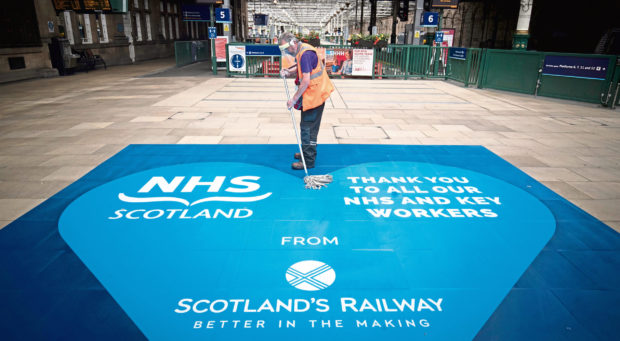All governments in the UK have done badly at the Covid-19 test. Marginal differences, “four nations” respect and a complexity to the messaging aside, Great Britain’s administrations have acted slowly and seen lots of people die.
Some will discuss the falling death rate in Scotland, now faster than England’s, as if this was a competition. They will also acclaim Sturgeon who undoubtedly looks more capable than Johnson.
But playing top trumps between the administrations is a dark game – we killed fewer than you!
A kinder approach is to ask what is wrong with how we govern in Britain. The set-up of cabinet ministers, expert advisers, civil service officials and a conscientious public sector failed, in comparison to lots of others countries.
Whether you are a British, English or Scottish Nationalist, allegiance to our way of doing things looks misjudged. We rush to “protect the NHS” but in so doing, stop all non-virus health care. This is still to be pitched as a national triumph. In time, it will be seen as more of a disaster. One of the top economies in the world ignored its cancer sufferers for the virus.
No minister in any administration has seen fit to resign, or even apologise, over the myriad of failings over testing, care homes and hospital infections. The lead civil servant for health, Paul Gray, did apologise for not stockpiling PPE in Scotland, but that’s the only contrition on offer, and he’s moved on.
The four nations of the UK abjectly failed to give education the same glory treatment as the health service. The Scottish Government spent weeks preparing for “blended learning” but U-turned within days on realising it was a stupid plan at the outset. Did anyone take responsibility – no.
This level of incompetence continues because all parts of the UK like their privacy. If ever our culture for politics behind closed doors looks broken, it is now. The minutes of scientific advisors are kept from us, the plans of nameless officials are never revealed, the decisions of NHS managers and teaching unions are never published.
Everyone gets to hide their failings behind the veil of government. In that world, everyone knows each other’s mistakes and nobody is singularly at fault. Serious jobs and vital tasks are obscured by a child-like denial of responsibility.
We have a system of government far too attached to strategy documents and targets than to the actual quality of outcomes. To the Martian looking at British government, the conclusion would be that it is a publishing and discussion operation, a bit like a large book group. From document to bullet point to speech, back to document.
Yet the rules of the book group are unclear. Johnson could announce the scrapping of the Department for International Development without even discussing it at cabinet, we are told, though obviously cabinet minutes are secret too. Checks and balances of government, anyone? The scrutiny of parliament?
In London a kamikaze style of leadership seems to get pretty similar results to the cautious, self-preserving conservatism of the Edinburgh administration. Does this show that Britain’s civil service is a corrective to the extremes of political style, or that it doesn’t really matter who’s in charge, as the whole system is sclerotic?
This could all be put down to the mysteries of the unwritten constitution and the legacy of inventing much of modern government structure, but for one niggling detail.
Both London and Edinburgh are run by nationalist leaders who want to revive their respective national fortunes by dramatic acts of change.
Johnson is to upset Britain/England’s post-war order by alienating allies, ending a successful union with Europe and setting off for the high seas with a cutlass gripped between his teeth and a buxom wench in either hand.
While Sturgeon wants to alienate England, upset the British union and, er, join a book group? Support for Indy is riding high at 54% and the comedy of errors which is Johnson’s Tories looks set to drive that higher. But finding Boris silly is not the same as making a successful nation.
The virus has yet again exposed the weakness of the British government model. Yet nobody in Nat land seems to think there is any contradiction in wanting Indy but keeping the old structures. After 13 years of SNP leadership, Scotland is pretty much as she was, but more centralised.
Our NHS was as battered as elsewhere in the UK, our education as badly managed, our public services put under the same stresses, our workforce laid off in the same manner. Further, our cabinet has performed its own catalogue of mistakes, while our civil service has enabled a raft of bad decisions.
You would think that someone in the Indy camp was scratching their heads and wondering if it made any sense to keep going with a model they are happy to call broken when it’s south of the border, but which apparently delivers fantastic results for Scotland.
Yet there is no one, and the paradox isn’t mentioned, and the thinking never happens – because that’s the British way.










